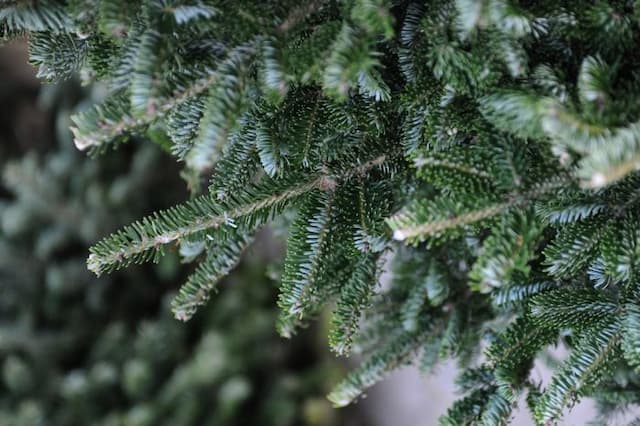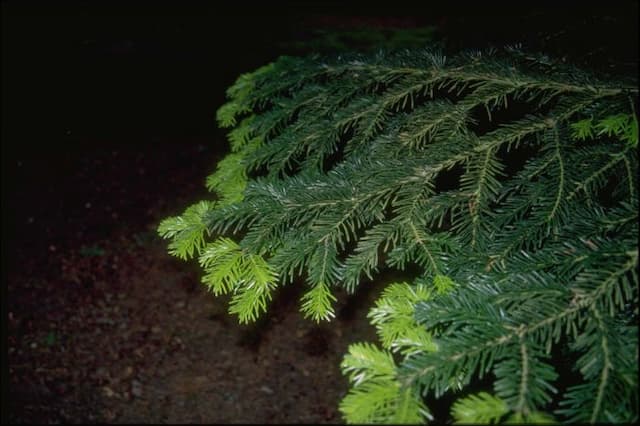Mugo Pine Pinus mugo

ABOUT
The plant known as mountain pine has a dense, spreading nature, often forming a rounded shape with thick foliage. The leaves are needle-like, typically shiny and deep green, contributing to its lush appearance. These needles grow in pairs, giving the plant a distinct tufted look. The bark of the mountain pine has a rugged texture, often appearing gray-brown, adding to the plant's robust character. During the blooming period, it produces cones that start out small and green but mature to a brown color, providing a contrast to the needles. These cones are woody and can remain on the plant for some time, adding to the plant’s visual interest throughout the seasons. Overall, the mountain pine has a hardy and resilient appearance, making it a favorite for adding greenery to landscapes without referencing its specific dimensions.
About this plant
 Names
NamesFamily
Pinaceae.
Synonyms
Mountain Pine, Mugo Pine, Swiss Mountain Pine.
Common names
Pinus mugo Turra, Pinus montana Mill., Pinus pumilio Haenke, Pinus mughus Scop., Pinus uncinata Ramond ex DC.
 Toxicity
ToxicityTo humans
Mugo pine (Pinus mugo) is generally not considered toxic to humans. However, consuming parts of any pine tree in large amounts can potentially cause digestive disturbances since humans are not adapted to digest the high resin content and fibrous material found in the plant. The needles, if ingested in significant quantities, could pose a physical hazard or lead to an intestinal obstruction. There is no specific poisoning syndrome associated with this plant for humans, as it is not commonly consumed.
To pets
Mugo pine (Pinus mugo) is also generally considered non-toxic to pets. However, if pets consume a large amount of pine needles, they may experience mild gastrointestinal upset, such as vomiting or diarrhea, due to the irritant nature of the needles or the resin they contain. Although poisoning is not typically associated with this plant, ingestion of substantial quantities of any plant material can potentially lead to intestinal blockages or other digestive tract issues in pets.
 Characteristics
CharacteristicsLife cycle
Perennials
Foliage type
Evergreen
Color of leaves
Green
Height
3-20 feet (1-6 meters)
Spread
10 feet (3 meters)
Plant type
Tree
Hardiness zones
2-8
Native area
Europe
Benefits
 General Benefits
General Benefits- Landscape Use: Pinus mugo, commonly known as mugo pine, is widely used in ornamental landscapes for its compact growth and evergreen foliage, adding structural interest throughout the year.
- Erosion Control: The plant's root system helps stabilize soil and control erosion on slopes and hilly terrains.
- Wildlife Habitat: Provides shelter and nesting sites for birds and small mammals due to its dense foliage and structure.
- Privacy Screen: Can be used to create natural privacy screens or windbreaks in gardens and property borders.
- Drought Tolerance: Once established, it has good drought tolerance, making it suitable for xeriscaping and gardens with low water availability.
- Cold Hardy: The species is cold-hardy and adapts well to harsh winter conditions, which makes it suitable for use in cold climates.
 Medical Properties
Medical Properties- Respiratory Health: Pinus mugo has been used in traditional medicine to help relieve cough and respiratory ailments due to its expectorant properties.
- Antiseptic: It possesses antiseptic qualities, which may be beneficial in treating cuts, wounds, and various skin infections.
- Anti-inflammatory: Components found in Pinus mugo may offer anti-inflammatory effects, potentially aiding in the reduction of swelling and pain associated with conditions like arthritis.
- Antioxidant: Rich in antioxidants, extracts from the plant might help in neutralizing free radicals and supporting overall health.
- Analgesic: There are indications that Pinus mugo might have pain-relieving properties, which could help in alleviating minor aches and pains.
 Air-purifying Qualities
Air-purifying QualitiesThis plant is not specifically known for air purifying qualities.
 Other Uses
Other Uses- Pinus mugo, commonly known as mountain pine, can be used to create bonsai trees due to its natural dwarf form and ability to be trained into miniature shapes.
- The resin of mountain pine is used in traditional varnishes and adhesives, capitalizing on its sticky composition and natural waterproof qualities.
- Mountain pine needles can be used as a natural mulch in gardens, providing insulation, moisture retention, and weed suppression.
- The wood from mountain pine, being dense and robust, is often utilized in constructing rustic furniture, giving an alpine aesthetic to interior designs.
- The durable wood of mountain pine can also be employed in crafting musical instruments such as flutes, utilizing its acoustic properties.
- Mountain pine cones can be utilized in arts and crafts, serving as natural ornaments or components in DIY projects.
- The branches and needles of mountain pine are often used in festive decorations, especially during the Christmas season for wreaths and garlands.
- Essential oils distilled from mountain pine are used in aromatherapy and perfumes, providing a fresh, forest-like scent.
- The thick bark of mountain pine can serve as a natural tinder for starting campfires and is valued for its slow-burning characteristics.
- Mountain pine sawdust can be used as a natural abrasive for cleaning and polishing in woodworking and metalworking practices.
Interesting Facts
 Feng Shui
Feng ShuiThe Mugo Pine is not used in Feng Shui practice.
 Zodiac Sign Compitability
Zodiac Sign CompitabilityThe Mugo Pine is not used in astrology practice.
 Plant Symbolism
Plant Symbolism- Resilience and Longevity: Pinus mugo, commonly known as mountain pine, is known for its hardy nature and ability to thrive in tough mountain environments. This symbolizes the strength to withstand hardships and the capacity to live a long, enduring life.
- Steadfastness: The mountain pine, with its sturdy growth and roots, represents steadfastness and reliability. This symbolism speaks to the plant’s ability to remain unswayed by harsh climates, standing firm against the elements.
- Protection: In some cultures, mountain pine is considered to be a symbol of protection due to its evergreen nature and its historical use in warding off evil spirits with its strong, pine scent. The plant serves as a reminder of safety and security.
 Water
WaterMugo Pines require minimal watering once established, as they are drought-resistant. Water newly planted Mugo Pines once a week with about 1-2 gallons per plant to help them establish roots. After the first growing season, watering can be reduced, and the plant will typically thrive on rainfall alone unless there is an extreme drought. During prolonged dry spells, water every two to three weeks, ensuring the soil is moist but not waterlogged.
 Light
LightMugo Pine thrives best in full sun, meaning it should receive at least 6 hours of direct sunlight daily. The ideal spot for a Mugo Pine is in a location where it is exposed to unfiltered sunlight for most of the day. These pines can tolerate light shade, but their growth might be less compact and more open in reduced lighting.
 Temperature
TemperatureMugo Pine is hardy and can tolerate a wide range of temperatures. It can withstand cold down to -50 degrees Fahrenheit and will do well in areas where the temperature does not exceed 90 degrees Fahrenheit. The ideal temperature range for growing this pine is between 40 to 70 degrees Fahrenheit.
 Pruning
PruningPrune Mugo Pine to maintain its shape and size as well as to remove dead or diseased branches. The best time for pruning is late winter or early spring before new growth starts. Mugo Pines can be pruned annually, but excessive pruning should be avoided to maintain their natural form.
 Cleaning
CleaningNot needed
 Soil
SoilMugo Pine thrives best in a well-draining, acidic to neutral soil blend with a pH of 5.5 to 7.2, consisting of peat, sand, and compost. Aeration and drainage can be enhanced by incorporating bark or perlite.
 Repotting
RepottingMugo Pine, being a slow-growing conifer, doesn't require frequent repotting. It's generally sufficient to repot young trees every 2-3 years and mature trees only when the pot is outgrown or every 4-5 years.
 Humidity & Misting
Humidity & MistingMugo Pine prefers moderate to low humidity levels and can tolerate dry air, making it well-suited for most outdoor environments where humidity does not become excessively high.
 Suitable locations
Suitable locationsIndoor
Mugo Pine indoors needs bright light, cool temp, good air flow.
Outdoor
Plant in sun, well-draining soil, mulch, water regularly.
Hardiness zone
2-8 USDA
 Life cycle
Life cyclePinus mugo, commonly known as mountain pine, starts its life cycle with seed germination, usually occurring in spring when soil temperatures are suitable for root establishment. The seedlings then grow into juvenile plants, developing a strong taproot and beginning to form their characteristic needle-like leaves. As they mature, mountain pines enter a period of rapid growth where they develop a woody stem and branches, increasing in height and width, influenced by environmental factors such as light, soil, and water availability. Through vegetative growth, the trees reach maturity and begin reproductive development, producing male cones that release pollen and female cones that, after pollination, develop seeds. These cones mature over a period of 1 to 2 years, after which the seeds are dispersed, often by wind or animals, to initiate new growth cycles. Lastly, mountain pines have a long lifespan and can remain in the mature, reproductive stage for many years, continually producing cones until they reach senescence and ultimately die.
 Propogation
PropogationPropogation time
Spring to Summer
The most common propagation method for Pinus mugo, commonly known as mugo pine, involves the use of seeds. Seeds are typically sown in the fall after they've been harvested to take advantage of the cold stratification provided by winter temperatures. The stratification process breaks the seed's dormancy and prepares it for germination in the spring. Alternatively, seeds can be stratified artificially by placing them in moist sand within a plastic bag and keeping them in a refrigerator, usually at 34 to 40 degrees Fahrenheit (1 to 4 degrees Celsius), for a period of approximately 4 to 6 weeks before sowing in pots or a nursery bed. Seedlings usually require several years of growth before they are large and robust enough to be transplanted to their permanent location.








